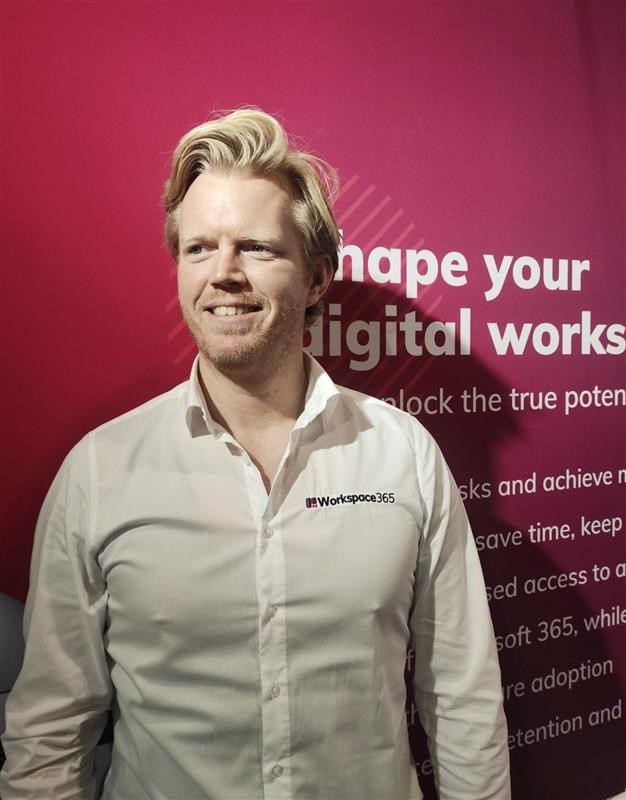While change has a habit of being inevitable in all areas of our lives, there’s still a reluctance from humans to find different ways of doing things at work. We settle on methods which help us complete our daily tasks in ways which suit us, which means that ideas and concepts that might upset the apple cart are viewed with suspicion, caution and even fear.
Don’t be afraid of the transition
Of course, there’s no need to be scared of change. But starting the process of moving from one established method to a totally different new way of working is naturally daunting. To assuage any concerns, a gradual transition helps employees get to grips with the unknown.
Investment in remote-working technology has naturally increased significantly in recent years and will continue as the demand for hybrid working is set to continue. The global cloud computing market is set to be worth more than an eye-watering $376bn by 2029 , so it’s obviously the direction in which many companies are heading as on-premise infrastructure becomes less and less the norm.
Looking into their crystal ball in 2020, Gartner claimed that by 2025 cloud would be the key driver of business innovation and that the majority of mainstream organisations will find it hard to implement new business models or ecosystem relationships without a reliance on cloud services. They also predicted that cloud technology would be democratised for the masses by service providers offering consumption-based pricing and ubiquitous availability.
There is, therefore, pressure on your business to adopt cloud processes, but your people will almost certainly have questions and queries about it being used in your business. Chief amongst these is likely to be whether migration to it will result in a totally different working experience for them, which is where the fear of change rears its head.
The familiar old and the exciting new, brought together
The good news is that an adaptive digital workplace gives your people the reassurance they need. They allow you to consistently retain the software that employees are used to and which they know will help them do their jobs. At the same time, they enable the use of technology that gives them a bespoke platform that is totally unique to them and which will give them time back in their day by stripping the unnecessary IT-related processes from how they work. With no wholesale change from the familiar, the adaptive digital workplace is the perfect bridge between the old and the new.
Everything they need to do their own, individual role will be housed in the workplace that they can access on any device, at any time, anywhere in the world. There’s less searching for, less clicking onto and less switching between apps which takes up so much time of the working day, in some cases up to ten times a day . Document management systems bring collaboration, order and ease of access to files that were perhaps buried under several layers of storage or disparately spread across previous IT systems. With this simple access also comes the benefit of easy version control too, which means that edits are never lost.
Integrating legacy software such as Windows Virtual Desktop, Citrix virtual apps and legacy file servers into a digital workplace is not just a way of making your people feel comfortable with the new tech that will be key to their roles.
Keeping your systems safe
Integration will also give the team in charge of your systems peace of mind when it comes to security. So-called ‘Shadow IT’ – meaning when an employee spends their own money on their own tech to use for work tasks – is fraught with dangers as it is not part of the business’s security ecosystem and therefore open to breaches. When an employee feels comfortable enough with their work tech even after it changes, because it keeps the consistent core functionality that they are used to, the concerns surrounding Shadow IT are eliminated.
A single sign-on to the workplace will also significantly reduce the potential for breaches, as well as ensuring a smooth, friction-free working day.
Happy employees are the best employees for your business
The adaptive digital workplace which integrates consistent legacy systems via the cloud with an all-in-one portal results in an overwhelmingly positive employee experience. In turn, this increases profitability , reduces absenteeism and increases productivity.
And that makes your customers happy too. Almost four-in-five companies with an engaged workforce provide ‘significantly better customer service’ than those which don’t .
There’s nothing to fear from working in the cloud, as the millions of people who now do so can attest to. Your people will still be able to work using their preferred tools in the digital workplace, and it’s that location which will bring them the extra advantage of significantly increasing their productivity and your business’s profitability.
The future is here and it uses the success of the past as its foundation.




